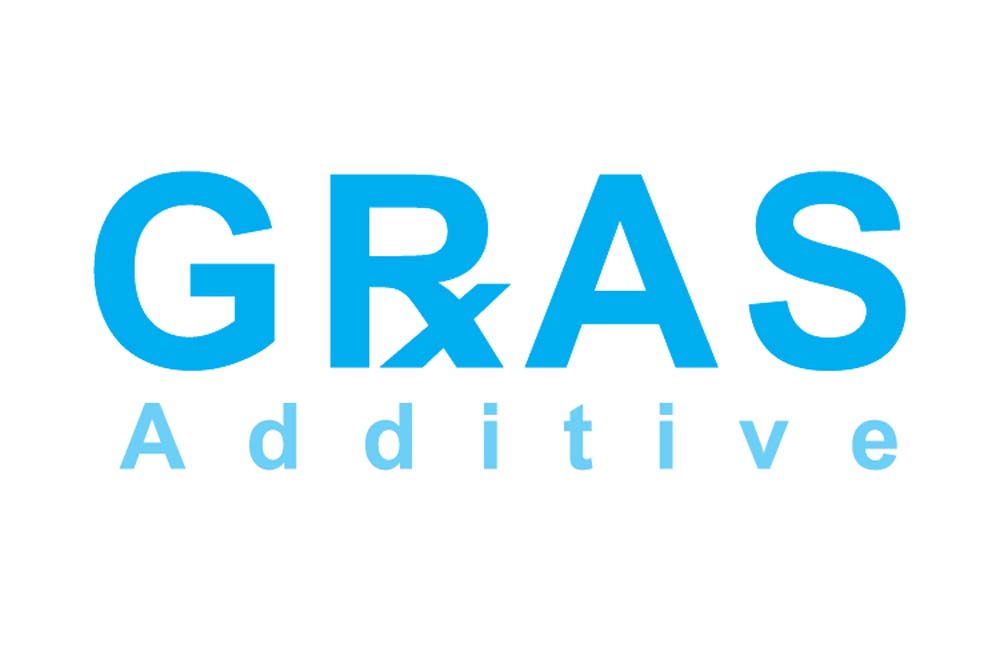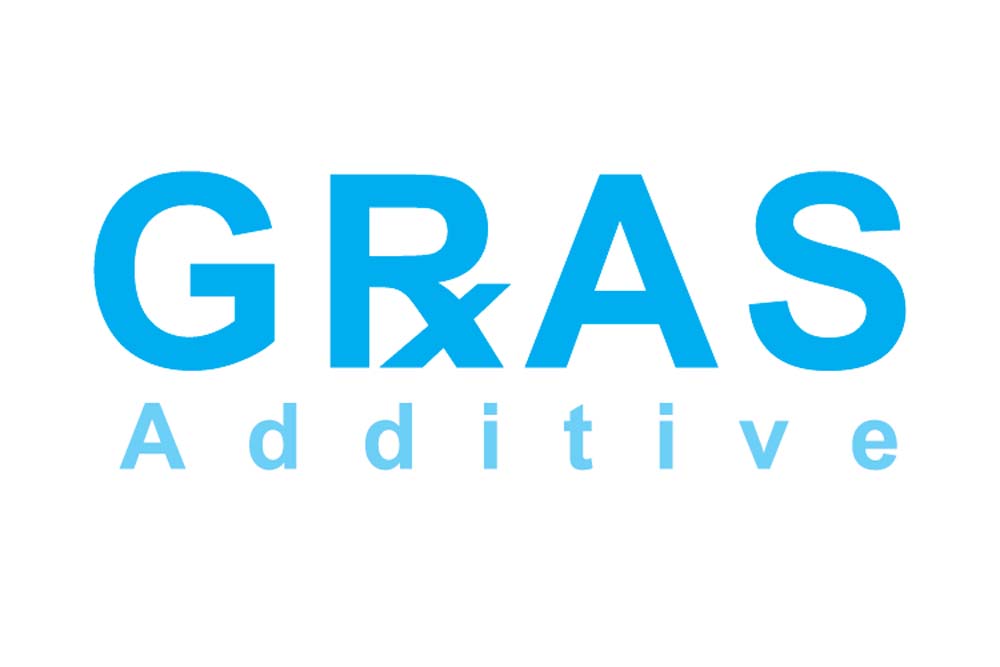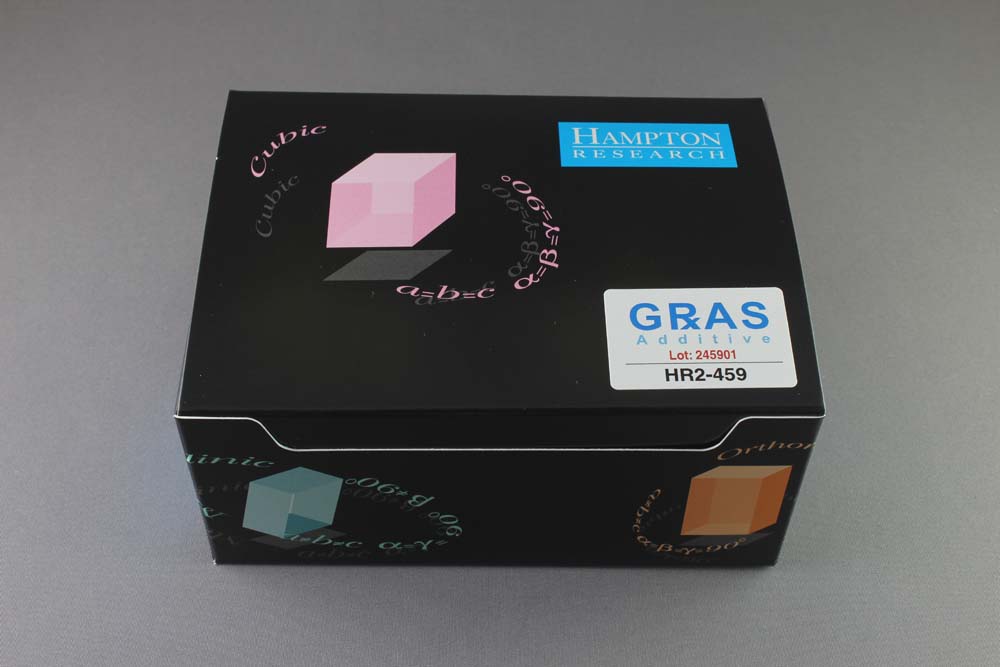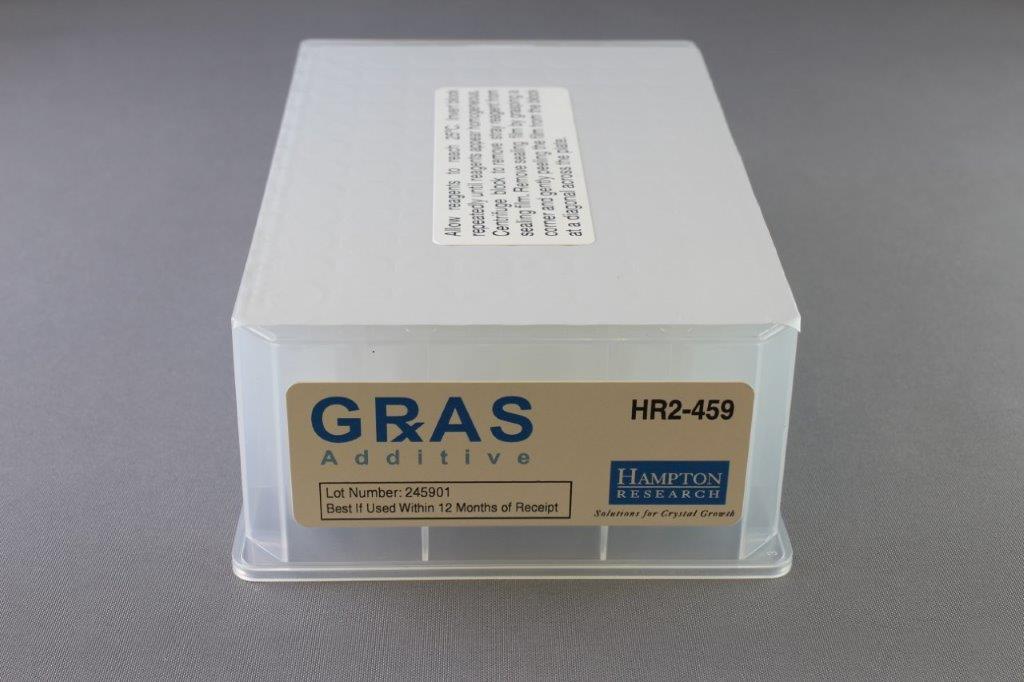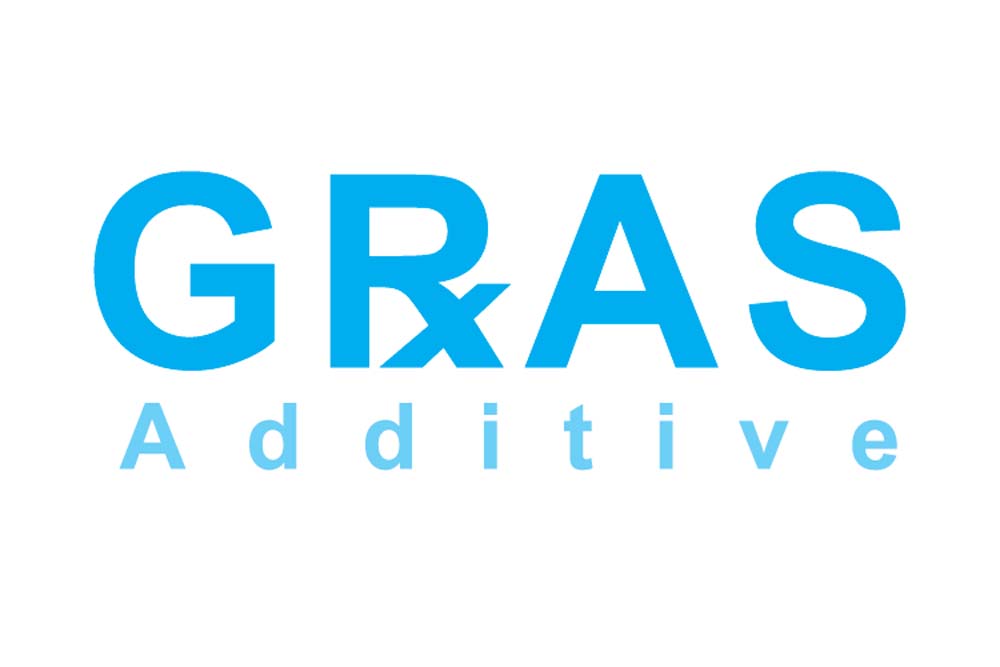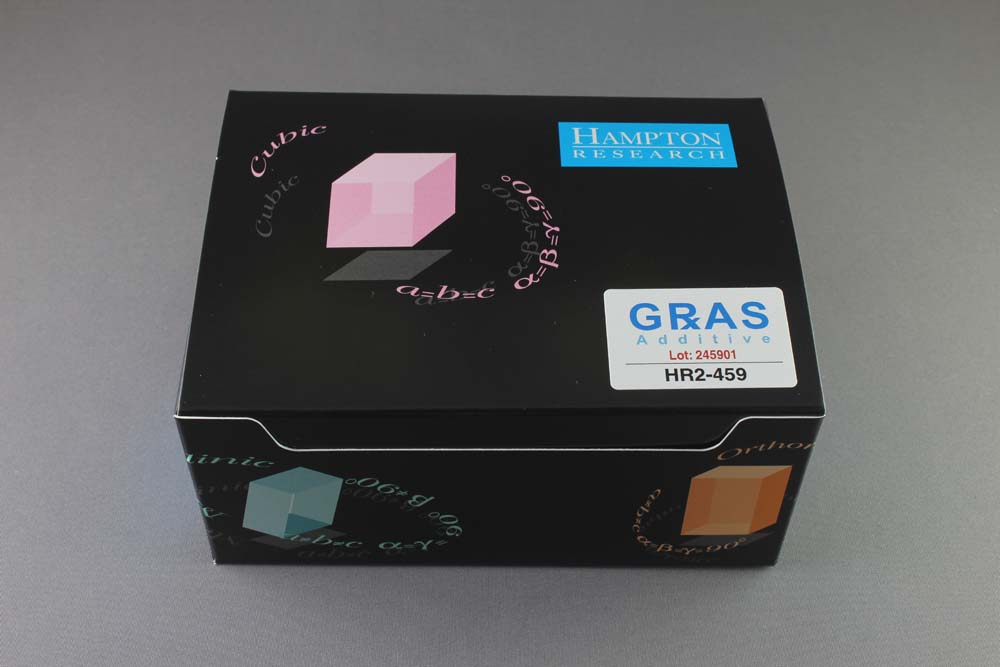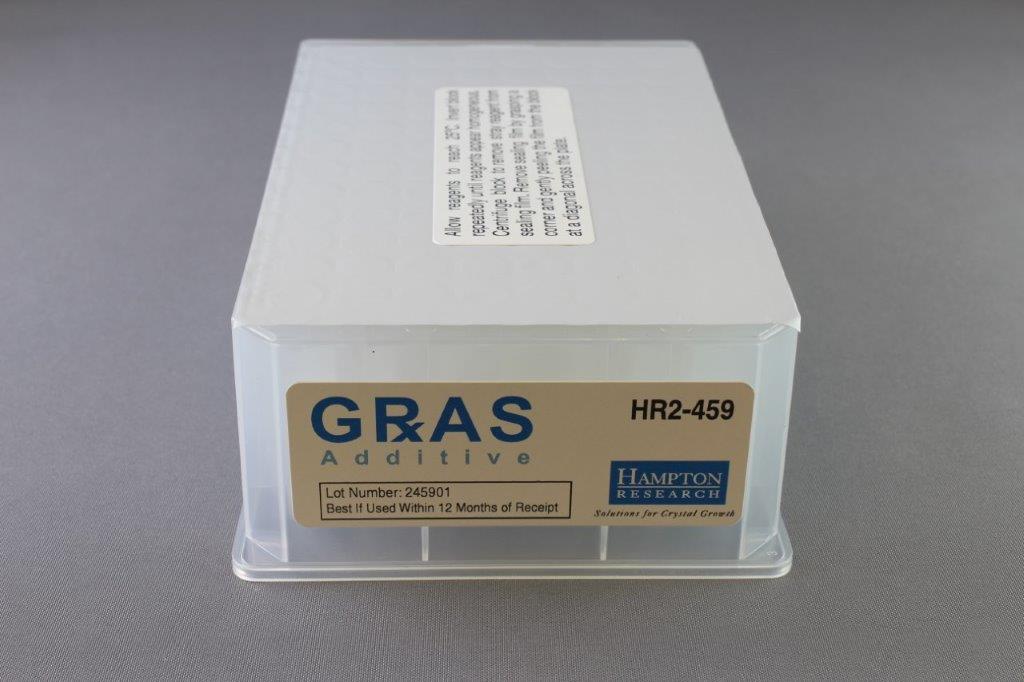Hampton Research蛋白结晶试剂盒






Products > Optimization Screens > GRAS Additive > GRAS Additive
GRAS Additive
Applications
- GRAS Additive™ is an optimization kit designed to evaluate 96 unique water soluble reagents and their ability to influence, promote and improve the crystallization of biological macromolecules.
Features
- Developed at Hampton Research
- Bio focused additive screen for the optimization of biological macromolecular crystals
- For use with soluble proteins, membrane proteins, and biological therapeutics
- Generally Recognized As Safe reagent formulation
- Compatible with vapor diffusion, microbatch, free interface diffusion
Description
GRAS Additive is an optimization kit designed to allow rapid and convenient evaluation of 96 unique reagents and their ability to influence the crystallization of biological macromolecules, including but not limited to soluble proteins, membrane proteins, and biological therapeutics.1-5
The chemicals in GRAS Additive have been used under one or more of the following categories. As (1) a Generally Recognized As Safe (GRAS) substance, (2) a pharmaceutical excipient, (3) a normal physiological constituent, (4) a metabolic byproduct.5, and/or (5) a Everything Added to Food in the United States (EAFUS) substance.
The 96 by 1 ml, deep well block reagent screen, is designed to be compatible with most popular crystallization reagents including reagents utilized in Hampton Research screens. Compatible with vapor diffusion, microbatch, and free interface diffusion. For research use only.
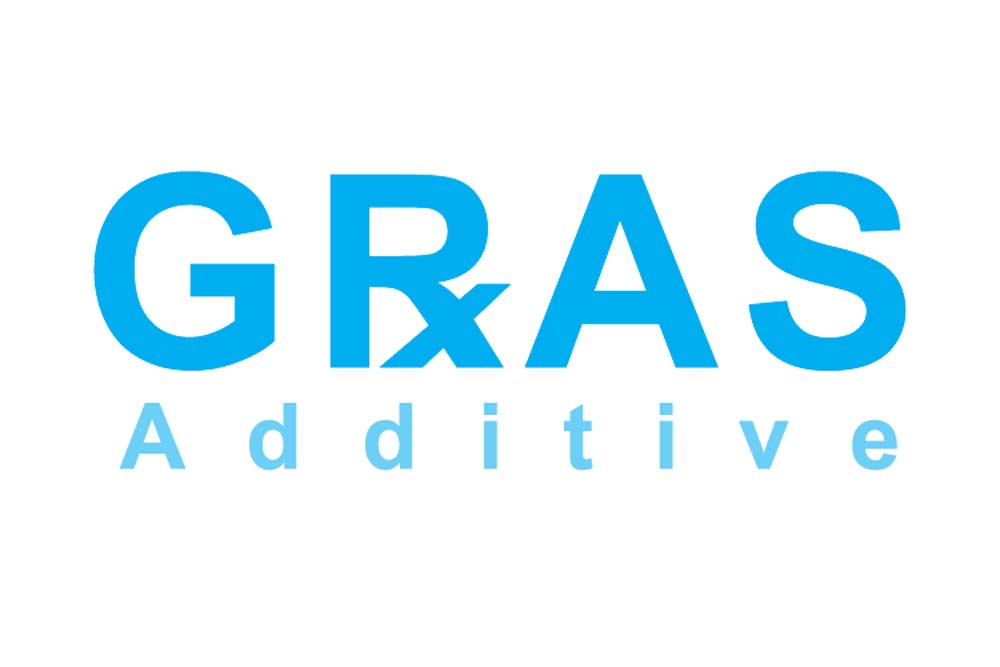
Click to Zoom In
CAT NO
HR2-459
NAME
DESCRIPTION
1 ml, Deep Well block format
PRICE
$500.00
cart quote
Support Material(s)
 HR2-459 GRAS Additive Documents
HR2-459 GRAS Additive Documents HR2-459 GRAS Additive SDS
HR2-459 GRAS Additive SDS GRAS Additive Formulation & Scoring Data
GRAS Additive Formulation & Scoring Data Related Item(S)
- Individual GRAS Additive Reagents
References
1. Searching for silver bullets: An alternative strategy for crystallizing macromolecules. Alexander McPherson and Bob Cudney. Journal of Structural Biology 156 (2006) 387-406.
2. A novel strategy for the crystallization of proteins: X-ray diffraction validation. Steven B. Larson, John S. Day, Robert Cudney, and Alexander McPherson. Acta Cryst. (2007) D63, 310-318.
3. Development of an alternative approach to protein crystallization. McPherson, Alexander; Nguyen, Chieniang; Larson, Steven B; Day, John S; Cudney, Bob. J Struct Funct Genomics, Volume 8, Number 4, December 2007, 193-198.
4. Progress in the Development of an Alternative Approach to Macromolecular Crystallization. S. B. Larson,J. S. Day, C. Nguyen, R. Cudney, and A. McPherson. Crystal Growth & Design 2008 Volume 8, No. 8 3038-3052.
5. Wishart DS, Jewison T, Guo AC, Wilson M, Knox C, et al., HMDB 3.0 – The Human Metabolome Database in 2013. Nucleic Acids Res. 2013. Jan 1;41(D1):D801-7. 23161693.
6. Optimization of crystallization conditions for biological macromolecules. Alexander McPherson and Bob Cudney. Acta Crystallographica Section F Volume 70, Issue 11, pages 1445-1467, November 2014.
7. Screening and optimization strategies for macromolecular crystal growth. Cudney R, Patel S, Weisgraber K, Newhouse Y, McPherson A. Acta Crystallogr D Biol Crystallogr. 1994 Jul 1;50(Pt 4):414-23.


Hampton Research, first in crystallization since 1991, developing and delivering crystallization and optimization screens, reagents, plates, and other tools for the crystallization of biological macromolecules, including proteins (antibody), peptides (insulin), and nucleic acids (DNA).
- Products
- Gallery
- My Account
|
|
|
- Contact Us
- Quick Order
- Support
|
- Privacy Policy
- Terms and Conditions
|
- Products
- Gallery
- My Account
- Support
- Contact Us
- Quick Order
- Privacy Policy
- Terms and Conditions
|
|
|
|
|
|
|
© 2021 HAMPTON RESEARCH CORP.
| Website by Skyhound Internet


